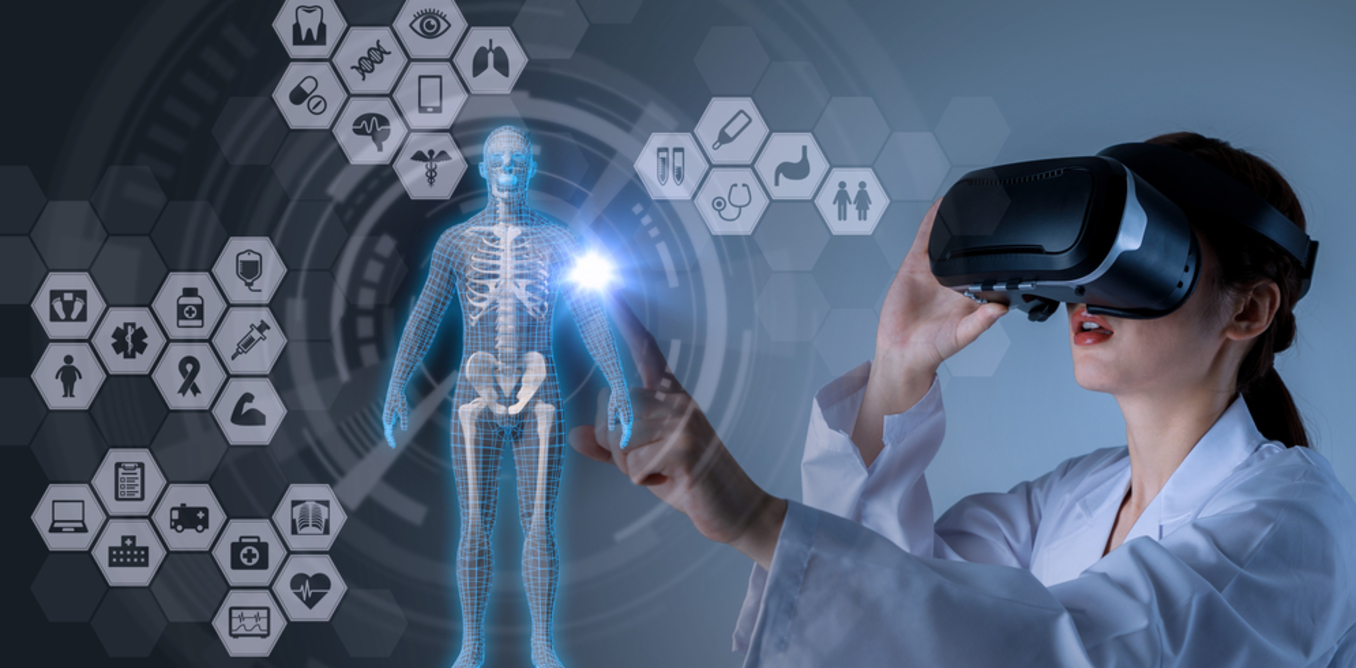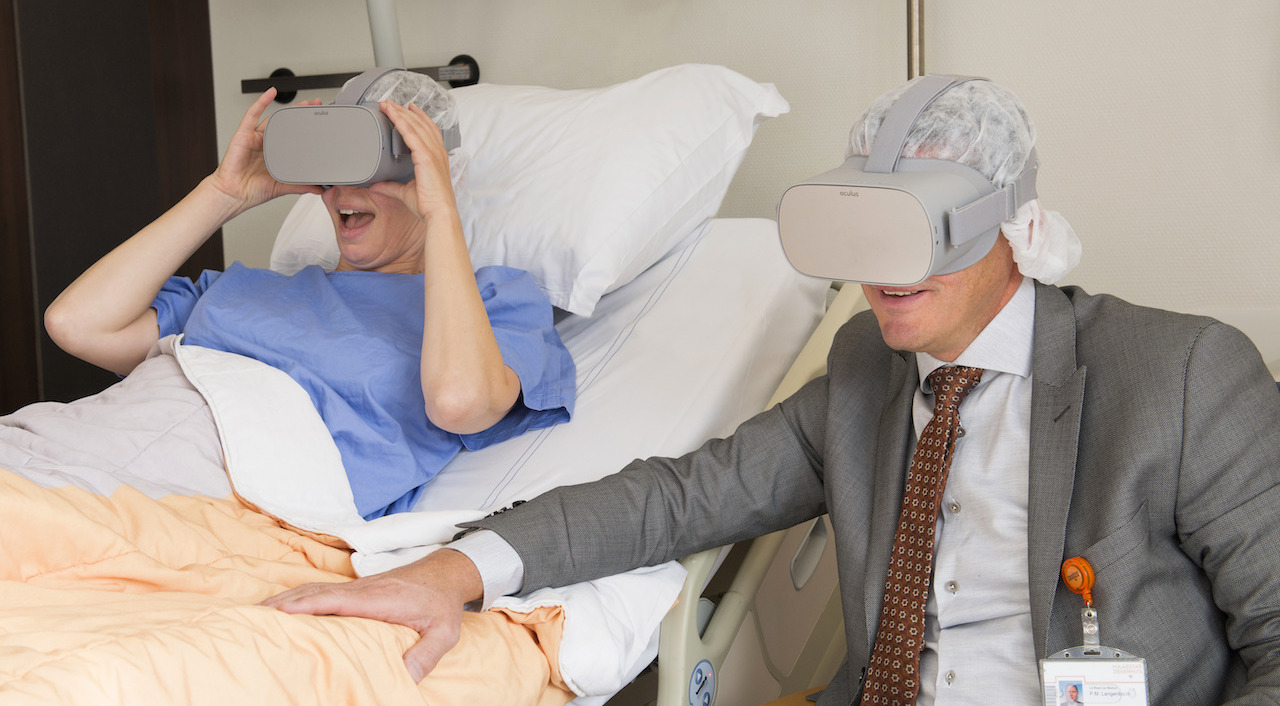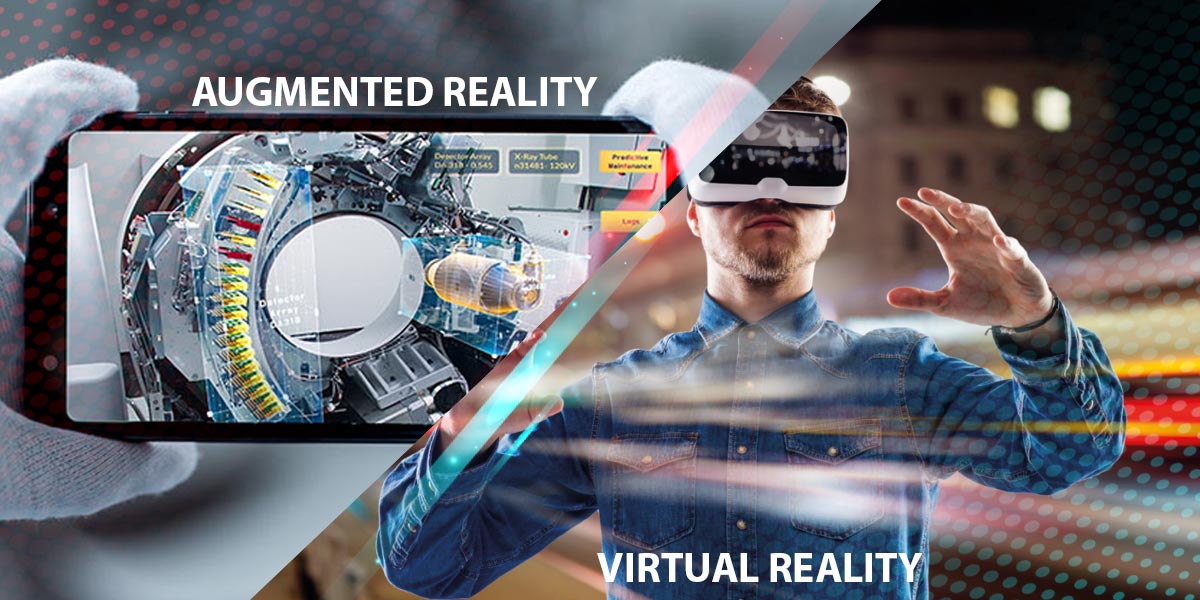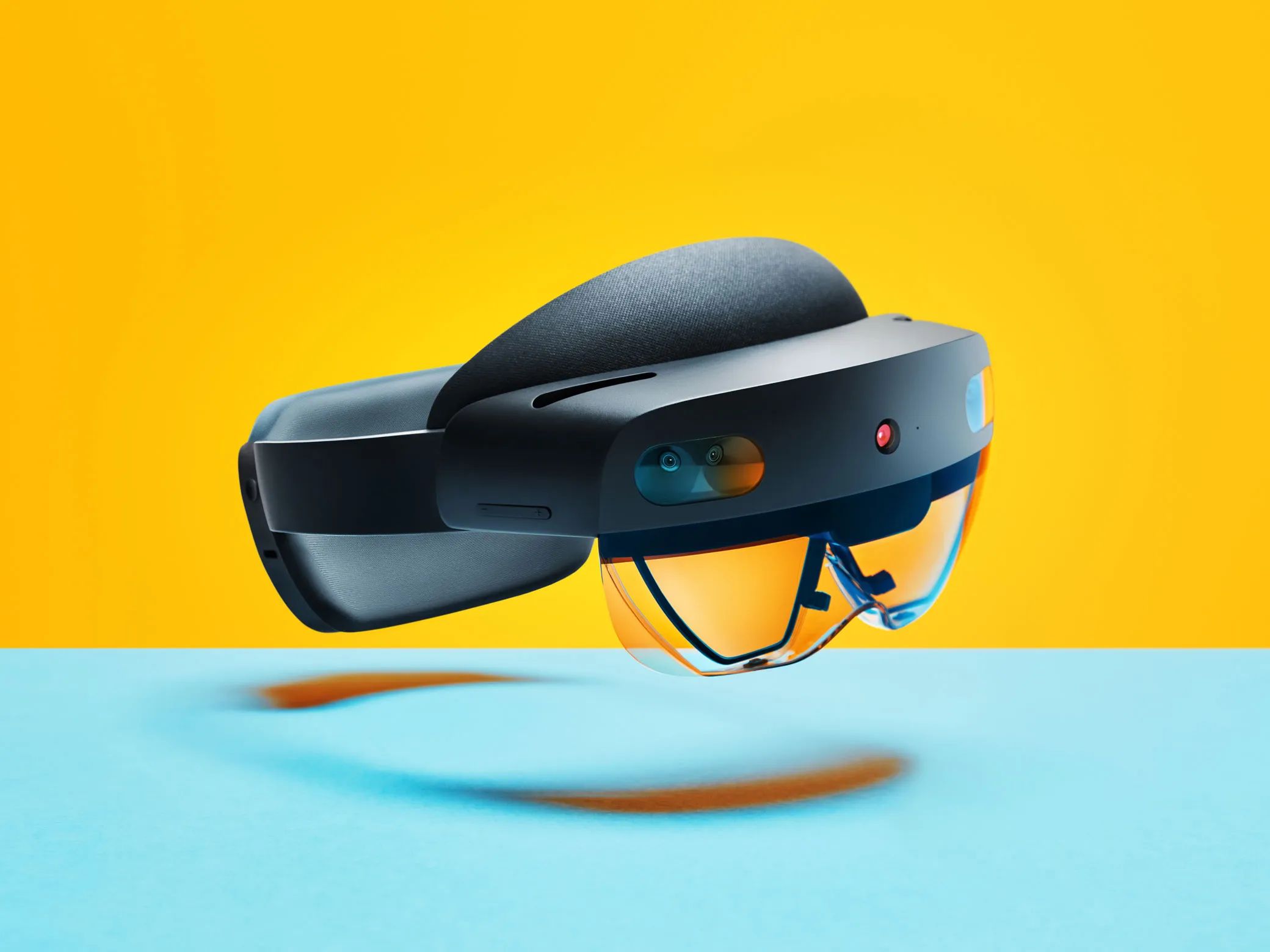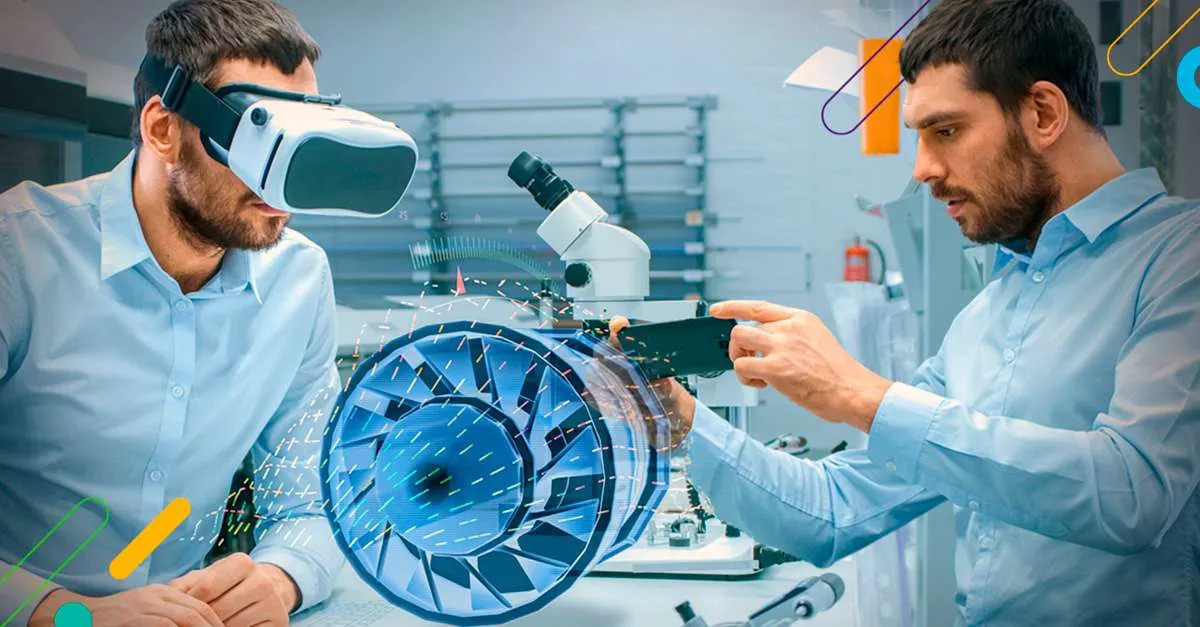Overview: How Can Virtual Reality Be Used In Healthcare
Virtual Reality (VR) has emerged as a groundbreaking technology that holds immense potential in revolutionizing various aspects of healthcare. By immersing users in realistic, computer-generated environments, VR can enhance patient experiences, improve treatment outcomes, and enhance medical training.
One key application of VR in healthcare is the reduction of pain and anxiety in patients. By creating immersive and interactive experiences, VR can distract patients from unpleasant procedures, such as injections or wound dressings. Studies have shown that using VR during these procedures can significantly reduce pain perception and anxiety levels, ultimately improving patient comfort and satisfaction.
VR is also being leveraged for rehabilitation and physical therapy. By providing patients with simulated environments and interactive exercises, VR can facilitate their recovery from injuries or disabilities. For example, stroke patients can use VR to regain motor skills through simulated activities like reaching or grabbing objects. This technology not only makes rehabilitation more engaging but also allows therapists to track patients’ progress more accurately.
Another key application is the training and education of healthcare professionals. VR allows trainees to practice complex procedures in a safe and controlled environment. Surgeons, for instance, can perform virtual surgeries to refine their techniques and improve their precision without risking patient safety. Additionally, VR can simulate emergency scenarios, allowing medical professionals to practice critical decision-making and teamwork skills.
VR shows promise in treating phobias and post-traumatic stress disorder (PTSD). By exposing patients to virtual scenarios that trigger their fears, therapists can gradually desensitize them and help them overcome their anxieties. VR therapy can also recreate traumatic events in a controlled setting, allowing patients to process and gradually reduce the impact of their traumatic experiences.
Mental health and stress reduction are also areas where VR has shown potential. Virtual environments can be designed to induce relaxation, mindfulness, and stress reduction. VR meditation and relaxation programs can help individuals manage anxiety, improve focus, and enhance overall mental well-being.
Virtual reality can play a vital role in managing chronic diseases. For patients with chronic pain or conditions like diabetes, VR can offer an immersive and interactive approach to pain management and education. VR can educate patients about their condition, help them develop self-management skills, and offer distraction techniques to reduce the perception of pain.
Furthermore, the use of VR has been explored in enhancing surgical procedures. Surgeons can utilize VR to visualize patient-specific anatomical structures, improving preoperative planning and reducing risks during complex surgeries. Additionally, VR can assist in training surgical teams and allowing them to better understand the nuances of intricate procedures.
Virtual reality can also be employed to create simulations for emergency response training. Medical personnel can practice triage, disaster management, and other emergency scenarios in a realistic VR environment. This prepares them to handle high-stress situations more effectively and ensures better coordination and patient care during real emergencies.
Another significant advantage of VR is its potential to improve patient communication and empathy. VR can simulate various patient scenarios, providing healthcare providers with insights into the experiences and challenges faced by patients. This helps enhance empathy and understanding, leading to improved patient-provider relationships and person-centered care.
Despite the many potential benefits, the implementation of VR in healthcare also raises ethical considerations and challenges. Protecting patient privacy, ensuring equitable access to VR technology, and addressing the potential for addiction or over-reliance are issues that need careful consideration and regulation.
In summary, virtual reality offers exciting possibilities for improving healthcare across a wide range of applications. From pain management and rehabilitation to training and patient communication, VR has the potential to transform the way healthcare is delivered, ultimately leading to better patient outcomes and experiences.
Reducing Pain and Anxiety in Patients
Pain and anxiety are common experiences for patients undergoing medical procedures, whether it’s a simple injection or a more invasive surgery. Virtual Reality (VR) has emerged as a promising solution to alleviate these discomforts and enhance the overall patient experience.
Using VR, healthcare providers can create immersive and interactive environments that distract patients from the sensations of pain and anxiety. By donning a VR headset, patients can be transported to a virtual world where they can engage in enjoyable activities or explore calming environments. This diversion effectively redirects their attention away from the medical procedure, reducing their pain perception and anxiety levels.
Studies have shown tangible benefits of using VR for pain management. In a study conducted with burn patients, those who experienced VR therapy during wound care reported significantly lower pain intensity and frequency compared to those who received traditional pain management techniques. Similarly, research on dental procedures found that patients immersed in VR experiences reported less anxiety and pain during treatments.
VR has also proven effective in pediatric settings. Children, who often experience heightened fear and discomfort during medical procedures, can benefit greatly from VR interventions. Guided by child life specialists, young patients can enter virtual worlds tailored to their preferences, such as underwater adventures or space exploration. This novel approach helps to distract children from the medical environment, reducing their anxiety and making procedures more tolerable.
The effectiveness of VR in pain and anxiety reduction can be attributed to its ability to create a sense of presence and immersion. When immersed in a virtual environment, patients experience a sense of “being there,” which effectively reduces their perception of pain and anxiety. This phenomenon, known as presence, is enhanced by the interactive nature of VR experiences, allowing patients to actively engage with their surroundings.
Furthermore, VR offers customizable and controllable stimuli, allowing healthcare providers to tailor the virtual experience to individual patient needs. Whether it’s adjusting the level of immersion, selecting calming environments, or adapting the intensity of interactive activities, VR can be adapted to suit each patient’s preferences and comfort levels.
It’s important to note that VR should not be considered a standalone solution for pain and anxiety management. Rather, it complements existing pain therapies and relaxation techniques. VR serves as an adjunctive tool that, when combined with other interventions like pharmacological treatments or guided relaxation exercises, can augment the overall effectiveness of pain and anxiety reduction strategies.
The widespread adoption of VR in healthcare settings faces challenges, such as cost, access, and user acceptance. However, as the technology becomes more accessible and affordable, its potential for pain and anxiety reduction in patient care is likely to grow. As ongoing research continues to explore the benefits and optimize VR interventions, healthcare providers can look forward to integrating this innovative technology into their practice, improving patient comfort and enhancing overall well-being.
Virtual Reality for Rehabilitation and Physical Therapy
Virtual Reality (VR) has emerged as a valuable tool in the field of rehabilitation and physical therapy. By creating immersive, interactive, and customizable environments, VR is transforming the way patients recover from injuries or disabilities.
One of the key advantages of VR in rehabilitation is its ability to provide patients with simulated environments and interactive exercises that mimic real-world activities. For example, stroke patients can use VR to regain motor skills by practicing movements like reaching, grabbing, or walking. By engaging in these virtual activities, patients can work on improving their coordination, strength, and balance in a safe and controlled setting.
VR therapy offers a unique advantage over traditional therapy methods. It provides immediate and accurate feedback to patients, allowing them to see their progress in real-time and adjust their movements accordingly. This feature enhances the therapeutic experience and helps patients gauge their improvement, motivating them to continue their rehabilitation efforts.
Another significant benefit of VR in rehabilitation is its potential for remote monitoring and tele-rehabilitation. Through VR platforms and wearable devices, healthcare providers can remotely monitor patients’ progress and provide real-time guidance. This approach enables patients to access rehabilitation services without the need for frequent in-person visits. Especially in situations where transportation or geographical barriers may limit access to conventional therapy, VR offers a convenient and cost-effective alternative.
Additionally, VR therapy can improve patient engagement and compliance. Traditional therapy exercises can sometimes become monotonous and repetitive, leading to patient disengagement. However, VR offers a more interactive and engaging experience that can keep patients motivated to adhere to their rehabilitation program. By incorporating game-like elements and rewards, VR therapy turns rehabilitation into an enjoyable and stimulating activity.
VR also lends itself well to pain management during physical therapy sessions. By distracting patients from discomfort or pain associated with exercises, VR can help improve their tolerance and adherence to therapy. As patients engage in immersive virtual environments or games, their attention is diverted from unpleasant sensations, making the rehabilitation process more comfortable and enjoyable.
Research has shown promising results in various areas of rehabilitation, including balance training, gait retraining, and upper limb therapy. Studies have demonstrated that using VR-based interventions in these domains can lead to improved motor function, increased range of motion, and enhanced overall functional ability.
While VR in rehabilitation and physical therapy presents numerous benefits, it is important to consider its limitations and potential challenges. Adequate training and supervision are essential to ensure safe and effective use of VR technology. Healthcare providers must also consider patient-specific factors, such as age, cognitive abilities, and personal preferences, when determining the suitability of VR interventions.
As VR technology continues to advance, its integration into rehabilitation and physical therapy holds great promise for enhancing patient outcomes and improving the efficiency of rehabilitation programs. By leveraging the immersive and interactive nature of VR, healthcare providers can offer more engaging, personalized, and effective rehabilitation experiences to their patients.
Training and Education for Healthcare Professionals
Virtual Reality (VR) is revolutionizing the way healthcare professionals are trained and educated. With its immersive and interactive capabilities, VR offers an innovative and effective approach to enhance learning experiences across various medical disciplines.
One of the key advantages of VR in training is its ability to provide realistic and immersive simulations of medical procedures and scenarios. Healthcare professionals can practice and refine their skills in a safe and controlled virtual environment before engaging in real-life patient care. Surgeons, for example, can perform virtual surgeries where they can practice complex techniques, develop surgical plans, and improve their precision without putting patients’ health at risk. This allows for more confident and competent practitioners, ultimately leading to better patient outcomes.
Furthermore, VR training facilitates the development of critical decision-making and teamwork skills. Through simulated scenarios, healthcare professionals can learn how to handle emergency situations, communicate effectively, and collaborate as a team. For example, emergency physicians can practice triaging patients in a virtual emergency room, making quick, well-informed decisions under stressful conditions. This immersive training prepares them for real-life scenarios and enhances their ability to provide efficient and coordinated patient care.
VR also offers the advantage of accessibility and scalability in training. It provides a consistent learning experience regardless of geographic location or resource constraints. Healthcare professionals from different parts of the world can access the same virtual training modules and benefit from standardized education. This democratization of training opportunities contributes to closing gaps in medical education across regions.
Another significant application of VR in healthcare education is in anatomy and physiology. Traditional methods of learning anatomy, such as cadaver dissection or two-dimensional diagrams, can be challenging for students to comprehend spatial relationships and visualize complex structures. VR provides an immersive and three-dimensional representation of human anatomy, allowing students to explore and interact with virtual bodies. This hands-on experience enhances their understanding and retention of anatomical knowledge.
VR in healthcare training is not limited to medical professionals. It can also support the training of other healthcare team members, such as nurses, technicians, and therapists. By simulating interdisciplinary scenarios, VR fosters collaboration and interdisciplinary understanding. For example, nurses and respiratory therapists can practice coordinating care for patients in a realistic virtual hospital setting, improving teamwork and communication skills.
While VR offers significant benefits, there are challenges to consider in its adoption for training and education. These include the cost of VR technology, the creation of high-quality and accurate virtual simulations, and the need for comprehensive training programs to ensure proper utilization of VR tools.
As technology continues to advance, VR will continue to play a vital role in the training and education of healthcare professionals. By providing immersive and interactive learning experiences, VR enhances skill development, critical thinking abilities, teamwork, and anatomical comprehension. Through VR, healthcare professionals can acquire the necessary expertise and competence to deliver the highest quality of care to their patients.
Treatment for Phobias and PTSD
Virtual Reality (VR) is proving to be a powerful tool in the treatment of phobias and post-traumatic stress disorder (PTSD). By creating realistic and controlled virtual environments, VR offers a safe and effective platform for exposure therapy and trauma-focused interventions.
For individuals with specific phobias, VR can provide a controlled environment to confront their fears gradually. By exposing patients to virtual scenarios that trigger their phobic reactions, therapists can guide them through desensitization exercises. For example, individuals with a fear of heights can be exposed to virtual heights, allowing them to gradually face their fear while maintaining a sense of safety and control. This exposure therapy approach within VR helps patients to restructure their fear responses and ultimately reduce their phobic reactions in real-life situations.
Moreover, VR therapy can be beneficial for individuals suffering from PTSD. Virtual reality can recreate traumatic events in a controlled setting, allowing patients to process their experiences and gradually reduce the emotional impact of their past traumas. Therapists can customize virtual environments to simulate triggering situations and guide patients through sessions of prolonged exposure therapy. This process allows patients to confront and reprocess traumatic memories or situations safely, facilitating their recovery and helping them regain a sense of control over their lives.
The immersive nature of VR therapy enhances the effectiveness of treatment for phobias and PTSD. Patients feel a sense of presence and immersion within the virtual environment, allowing them to engage emotionally as if they were in the real situation. This enhanced realism helps patients approach their fears more realistically and promotes a deeper emotional response during therapy sessions. Virtual reality creates a powerful and personalized therapeutic experience that can lead to better treatment outcomes.
Research has shown promising results in the use of VR therapy for various phobias, such as fear of flying, spiders, or public speaking. Studies have also demonstrated significant reductions in PTSD symptoms in individuals who received VR-based exposure therapy. VR offers an innovative and effective approach to traditional therapy techniques, resulting in improvements in symptom severity, avoidance behaviors, and overall quality of life.
Despite the demonstrated benefits, there are challenges to consider in the implementation of VR therapy for phobias and PTSD. These include the cost of VR equipment and software, the need for trained therapists who can expertly guide patients through sessions, and the need for ongoing research to refine and optimize these interventions.
As VR technology continues to advance, the use of virtual reality for the treatment of phobias and PTSD holds great promise. The immersive and controlled nature of VR environments offers a unique opportunity for individuals to confront their fears and process trauma in a safe and supported setting. By integrating virtual reality into therapeutic approaches, clinicians can expand their treatment options and provide more effective, individualized care for patients with phobias and PTSD.
Virtual Reality for Mental Health and Stress Reduction
Virtual Reality (VR) technology is making significant strides in the field of mental health by providing innovative approaches to stress reduction and improving overall well-being. By creating immersive and engaging virtual environments, VR offers a unique therapeutic tool for addressing various mental health conditions.
One of the key applications of VR in mental health is stress reduction. Virtual environments can be designed to induce relaxation, mindfulness, and stress relief. By immersing individuals in calming and peaceful virtual settings, VR can help reduce anxiety and promote a sense of tranquility. Patients can engage with relaxing activities, such as guided meditation or virtual nature walks, which provide an escape from the stressors of everyday life.
Virtual reality also allows for personalized and adaptive interventions. VR experiences can be customized to each individual’s preferences and needs, catering to their specific stress triggers and coping mechanisms. This customization enhances the effectiveness of stress reduction techniques, as individuals can engage in activities that resonate with them personally, leading to a more meaningful and impactful therapeutic experience.
Furthermore, VR therapy offers exposure to controlled stressors in a safe and controlled environment. By simulating stressful situations, therapists can guide patients through exposure therapy, helping them gradually confront and develop coping mechanisms for their stressors. For example, individuals with social anxiety can engage in virtual social interactions or public speaking scenarios to build their confidence and overcome their fear in a controlled setting. This exposure within VR helps patients to reframe their perceptions of these stressors and build resilience.
VR therapy extends its benefits to a wide range of mental health conditions. It has shown promise in managing symptoms of depression, anxiety disorders, phobias, and post-traumatic stress disorder (PTSD). By providing immersive sensory experiences, VR therapy engages patients’ senses and emotions, facilitating emotional regulation and providing a powerful tool for psychotherapy.
Another advantage of VR in mental health is its ability to provide an engaging and interactive platform for psychoeducation and therapy. Virtual reality can be used to teach individuals about stress management techniques, coping skills, and other therapeutic strategies in an immersive and experiential way. For example, individuals with anxiety disorders can learn and practice relaxation techniques within the virtual environment, receiving real-time feedback on their progress and skill development.
In addition to its therapeutic applications, VR is also being used in research and assessment within the field of mental health. By creating virtual scenarios, researchers can better understand the cognitive and emotional processes underlying mental health conditions. Virtual reality assessments enable a more comprehensive and ecologically valid evaluation of individuals’ mental states, providing valuable insights for diagnosis and treatment planning.
While the use of VR in mental health holds significant promise, challenges such as accessibility, cost, and the need for further research and validation must be addressed. Wide-scale adoption of VR therapy will require affordability and accessibility to ensure its availability to those who can benefit from it the most.
In summary, virtual reality has emerged as a powerful tool in mental health treatment, offering innovative approaches to stress reduction and enhancing overall well-being. By providing immersive experiences, personalized interventions, and exposure therapy in a controlled environment, VR therapy has the potential to transform the field of mental health, providing effective and engaging solutions for a range of mental health conditions.
Virtual Reality for Chronic Disease Management
Virtual Reality (VR) is emerging as a promising tool in managing chronic diseases by offering innovative approaches to education, self-management, and symptom relief. By providing immersive and interactive experiences, VR can support individuals in their journey of living with chronic conditions and improve their overall quality of life.
One of the key applications of VR in chronic disease management is patient education. Virtual reality can be used to create immersive experiences that educate individuals about their condition, treatment options, and self-management strategies. Through interactive simulations and visualizations, patients can gain a better understanding of their disease, empowering them to make informed decisions about their health and treatment plans. This immersive approach to education can enhance patient engagement and knowledge retention.
VR also offers a valuable tool for self-management of chronic diseases. By providing virtual environments and activities, individuals can practice self-care techniques, such as medication adherence, healthy lifestyle choices, and stress management. For example, VR can simulate cooking sessions to help individuals with diabetes make healthier meal choices and portion control. VR also enables patients to receive real-time feedback on their actions, facilitating behavior change and empowering them to take an active role in managing their condition.
In addition, VR therapy demonstrates potential in symptom relief for chronic diseases. Virtual environments can be designed to offer relaxation, distraction, and pain management techniques. For individuals experiencing chronic pain, VR can redirect their attention away from discomfort and provide a virtual environment that induces relaxation, reducing stress and pain perception. Virtual reality can also serve as a non-pharmacological therapy option, thereby enhancing overall patient well-being.
Virtual reality can enhance the patient-provider relationship and improve communication in chronic disease management. By simulating various scenarios, VR can help healthcare providers understand the challenges and experiences of patients living with chronic diseases. This insight facilitates empathy and understanding, fostering a more patient-centered approach to care. VR can also serve as a tool for remote consultations and follow-up visits, providing healthcare professionals with a virtual presence and enabling more convenient access to care for patients.
There are considerations in the wider implementation of VR for chronic disease management. Integration of VR into existing healthcare systems and workflows, along with adequate training for healthcare providers, will be necessary. Additionally, ensuring accessibility and affordability of VR technology for patients, particularly those from underserved populations, is crucial for equitable chronic disease management.
In summary, virtual reality holds great potential in chronic disease management. From patient education and self-management to symptom relief and improved patient-provider communication, VR offers innovative solutions for individuals living with chronic conditions. By leveraging the immersive and interactive nature of VR, healthcare providers and patients can work together to enhance self-care, improve outcomes, and enhance the overall quality of life for those living with chronic diseases.
Enhancing Surgical Procedures with Virtual Reality
Virtual Reality (VR) is revolutionizing the field of surgery by offering innovative tools and techniques that enhance surgical procedures. By providing immersive and realistic simulations, surgeons can benefit from improved preoperative planning, enhanced visualization, and increased precision during surgical interventions.
One of the key advantages of VR in surgery is its ability to visualize patient-specific anatomical structures. By utilizing VR technology, surgeons can access three-dimensional reconstructions of a patient’s anatomy, based on radiological imaging such as CT scans or MRIs. This immersive visualization allows surgeons to thoroughly examine complex anatomical structures before entering the operating room, helping to plan surgical approaches and identify potential challenges ahead of time.
VR also offers a platform for surgeons to practice and refine their techniques through virtual surgery simulations. Surgeons can perform virtual procedures using specialized haptic devices that recreate the sensations of handling surgical instruments. This allows surgeons to develop and improve their skills without the need for live patients and reduces the learning curve before performing the procedure in the operating room.
During actual surgeries, VR can enhance precision and accuracy. By overlaying real-time imaging data onto the surgical field, surgeons can have a heads-up display of critical structures, such as blood vessels or nerves, improving spatial orientation and reducing the risk of complications. This augmented reality aspect of VR surgery ensures that surgeons have the most up-to-date information and can make precise and informed decisions during the procedure.
Additionally, VR provides a platform for collaborative and remote surgery. Surgeons can connect virtually with experts or colleagues in different locations, allowing for real-time guidance and supervision during complex procedures. This remote collaboration enables knowledge-sharing and consultation, even in situations where physical presence is not possible.
Virtual reality also has the potential to improve surgical training and education. Trainees can learn and practice surgical techniques in a realistic virtual environment, gaining proficiency and confidence before performing actual procedures on patients. By providing a hands-on and low-risk setting, VR training reduces the learning curve and improves the competence of surgeons, ultimately contributing to enhanced patient safety and care.
Despite its numerous benefits, the implementation of VR in surgery does come with challenges. The high cost of VR equipment and software, as well as the need for specialized training and integration into existing surgical workflows, need to be addressed for widespread adoption. Additionally, the accuracy and reliability of virtual simulations must be ensured to provide realistic and effective training experiences.
In summary, virtual reality offers unprecedented opportunities to enhance surgical procedures. From preoperative planning and visualization to intraoperative guidance and remote collaboration, VR has the potential to transform the surgical landscape. As VR technology continues to advance and become more accessible, surgeons can expect to harness its capabilities for improved patient outcomes and advancements in surgical techniques.
Simulations for Emergency Response Training
Virtual Reality (VR) is proving to be a game-changer in emergency response training by providing realistic and immersive simulations. These simulations enable healthcare providers, first responders, and emergency personnel to practice and enhance their skills in high-stress and critical situations, leading to improved preparedness and more effective emergency responses.
One of the key advantages of VR in emergency response training is the ability to create realistic and interactive scenarios. By simulating emergency situations, such as mass casualty incidents or natural disasters, VR allows trainees to experience lifelike environments, complete with visual and auditory cues. This immersive experience enhances the authenticity of the training, providing a platform for realistic decision-making and actions.
VR simulations offer a safe and controlled environment for trainees to practice their skills without real-life consequences. Trainees can make critical decisions, prioritize actions, and implement emergency protocols while receiving immediate feedback on their performance. This iterative learning process helps build confidence, competence, and efficiency in emergency response scenarios.
Furthermore, VR allows for repetitive practice and skill refinement. Trainees can repeat simulations multiple times, exploring different strategies and approaches to simulated emergencies. This opportunity for repetition and variation in scenarios enhances the acquisition and retention of necessary skills, ensuring that emergency responders are well-prepared to handle diverse and challenging situations.
VR also facilitates interdisciplinary training and collaboration among healthcare providers and first responders. Simulations can involve multiple personnel and teams, allowing them to practice coordination, communication, and teamwork in complex emergency scenarios. Interdisciplinary training enhances mutual understanding, fosters effective communication, and promotes better coordination during real emergencies, ultimately leading to improved patient care and outcomes.
Another advantage of VR in emergency response training is its ability to simulate high-risk or infrequent situations. Trainees can experience situations that may occur rarely in real-life scenarios, such as hazardous material spills or mass casualty incidents. This exposure to atypical situations helps professionals develop the skills and confidence to respond effectively when faced with these rare events.
VR simulations also provide an opportunity for debriefing and reflective learning. Trainees can review their performance, identify areas for improvement, and receive constructive feedback from instructors or peers. This feedback loop facilitates continuous learning and growth, enabling trainees to refine their skills and make adjustments for future emergency responses.
While VR offers numerous benefits for emergency response training, challenges such as cost, technological infrastructure, and standardization need to be addressed for wider implementation. Ensuring access to VR equipment and software for training organizations, maintaining high-quality simulations, and establishing best practices for VR training are essential for effective and consistent training experiences.
In summary, virtual reality simulations have transformed the landscape of emergency response training. By providing immersive and realistic scenarios, VR enhances trainees’ preparedness, decision-making abilities, teamwork, and overall performance in high-stress situations. As VR technology continues to advance, it is poised to become an indispensable tool in training the next generation of emergency responders and ensuring effective emergency care and response.
Improving Patient Communication and Empathy
Virtual Reality (VR) is proving to be a powerful tool in improving patient communication and empathy among healthcare providers. By creating immersive and interactive virtual experiences, VR fosters a deeper understanding of patients’ perspectives, enhances empathy, and promotes more patient-centered care.
One of the key benefits of VR in patient communication is its ability to simulate various patient scenarios. Healthcare providers can immerse themselves in virtual environments that replicate the experiences and challenges faced by patients. By stepping into the shoes of patients, providers gain insights into their emotions, fears, and needs, fostering a greater understanding and empathy towards their patients’ unique circumstances.
VR can also enhance communication skills by providing healthcare providers with opportunities to practice difficult conversations. Through virtual simulations, providers can engage in realistic encounters with virtual patients who present challenging scenarios or deliver unexpected news. This immersive experience allows providers to develop and refine their communication skills in a controlled environment, leading to more effective and compassionate communication with real patients.
Empathy, a cornerstone of patient-centered care, can be significantly enhanced through VR experiences. By experiencing a virtual world that replicates the physical and emotional aspects of a patient’s condition, providers can develop a greater sense of empathy. This heightened empathy leads to improved patient-provider relationships, more personalized care plans, and healthcare experiences that align with patients’ values and preferences.
Virtual reality can also bridge cultural and language barriers in patient communication. VR simulations can be customized to represent diverse patient populations, taking into account cultural norms, beliefs, and communication styles. This enables providers to become more culturally sensitive, enhancing their ability to effectively communicate and provide appropriate care to individuals from different backgrounds. By promoting cultural competence, VR supports culturally responsive and inclusive healthcare practices.
Additionally, VR can aid in teaching healthcare providers nonverbal communication skills. Through interactive scenarios, providers can practice interpreting and responding to subtle cues from patients, such as body language, facial expressions, and tone of voice. Virtual reality offers a safe space to learn and refine these skills, ultimately leading to improved patient understanding and better interactions.
While the benefits of VR in improving patient communication and empathy are significant, challenges exist in its widespread implementation. Integration of VR into healthcare workflows, training healthcare providers on the effective use of VR in patient communication, and ensuring accessibility for all patients are factors that need to be considered to fully realize the potential benefits of VR in this domain.
In summary, virtual reality has the potential to revolutionize patient communication and empathy in healthcare. By offering immersive and realistic experiences, VR promotes understanding, empathy, and cultural competence among healthcare providers. As the technology advances and becomes more accessible, VR is set to play a critical role in transforming patient-provider interactions, ultimately leading to more patient-centered care and improved healthcare outcomes.
Ethical Considerations and Challenges of Virtual Reality in Healthcare
While Virtual Reality (VR) holds tremendous potential in revolutionizing healthcare, its adoption also raises important ethical considerations and challenges. As the use of VR expands in healthcare settings, it is crucial to address these concerns to ensure responsible and ethically sound implementation.
Privacy and data security are primary ethical concerns when it comes to VR in healthcare. Virtual reality platforms collect vast amounts of personal data, including biometric information, movement patterns, and behavioral responses. Safeguarding patient privacy and ensuring secure storage and transmission of this data are paramount to protect patient confidentiality and prevent potential misuse.
Another ethical consideration is the equitable access to VR technology. As VR can be expensive, marginalized communities or resource-constrained healthcare settings may face barriers in adopting and utilizing this technology. Ensuring equal access to VR in healthcare is essential to prevent exacerbating existing health disparities.
VR also raises questions about informed consent and the potential for therapeutic misconception. The immersive and realistic nature of VR experiences may blur the boundaries between virtual and real-world settings. Healthcare providers must ensure that patients fully understand the nature of VR interventions, the potential risks and benefits, and maintain clear communication to avoid misconception or false expectations.
Ensuring accuracy and validity of VR simulations is crucial. Medical simulations must reflect evidence-based practices and uphold the highest standards of medical ethics. Providers and developers must design and validate VR simulations based on expert knowledge and rigorous research to avoid misleading or harmful information or techniques.
Another challenge is the integration of VR into existing healthcare workflows. Healthcare providers need training and education to effectively utilize VR in their practice and ensure proper integration into their clinical routines. Ensuring seamless integration without disrupting patient care or overwhelming healthcare professionals is a critical consideration.
VR may also create dependency or addiction concerns. The highly immersive nature of VR experiences raises the possibility of individuals becoming overly reliant on virtual environments. Monitoring usage and addressing addiction concerns associated with VR are essential to ensure its responsible use and prevent potential adverse psychological effects.
Lastly, thoughtful regulation and standardization of VR in healthcare are necessary. Establishing guidelines, ethical frameworks, and best practices can help address safety, quality, and accountability considerations. These frameworks should involve collaboration between healthcare professionals, researchers, VR developers, and regulatory bodies to ensure responsible and ethical use of VR in healthcare.
While these ethical considerations and challenges are significant, actively addressing them can lead to the responsible and beneficial integration of VR technology into healthcare. By establishing ethical guidelines, ensuring data privacy, promoting equitable access, and promoting evidence-based practices, the potential benefits of VR in healthcare can be maximized while minimizing potential risks.







